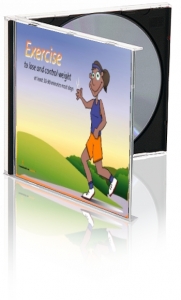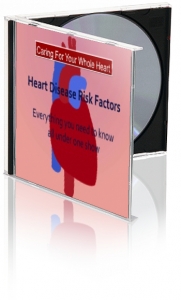Cracking the Vault for Running and Fitness Week
 It's Running and Fitness Week! To celebrate, we're posting an article about the impact of exercise on heart health. Where did we find such an amazing article, you ask? Why, it's from our comprehensive member library. If you're not already a member, you can sign up here! Or just read on for a sneak peek at our exclusive content...Most people think of exercise as a way to manage weight and keep cholesterol in check. While exercise without weight loss has little influence on total or LDL, a.k.a. "bad" cholesterol, research indicates that aerobic exercise does seem to change the type of LDL that the body produces. Small, dense LDL is very atherogenic. People who exercise regularly produce LDL that is larger and lighter and less likely to form plaque, which is great news for your heart.HDL, a.k.a. "good" cholesterol protects people from heart disease thanks to its role in reverse cholesterol transport. Reverse cholesterol transport is the transfer of cholesterol in LDL and VLDL to HDL, which takes the cholesterol to the liver so that it is not deposited in artery walls. Exercise affects several enzymes involved in the process to facilitate reverse cholesterol transport, which means that if you exercise, you will probably have fewer cholesterol deposits in your arteries.Don't get discouraged if your HDL numbers initially drop as you begin an exercise routine. Many people who take up exercise, go on a low-fat diet, and lose weight will actually see a lowering of HDL. Remember that there are other cardiovascular benefits from exercise. Some of these benefits include a decreased risk of diabetes, lower blood pressure, and a decreased chance of irregular heartbeats. In addition, if weight is lost with exercise, the lower HDL is not nearly as much of a concern. Plus, your HDL numbers should begin to come back up after several months of regular exercise.Another benefit of exercise is collateral vessel development. These collateral vessels can develop in hearts where arteries are blocked with plaque, creating a “natural bypass” of the artery. This is beneficial for maintaining the oxygen supply to the heart muscle. Exercise improves the ability of the heart’s blood vessels to dilate, and causes more blood vessels to develop. As blood vessels dilate more easily, the oxygen supply to the heart is enhanced. This increases the angina threshold in people who get chest pain with exercise. In other words, people who exercise regularly and also have chest pain will find that more work can be done before the pain occurs -- if they exercise regularly.The bottom line is that exercise is one of the most important things that you can do for your cardiovascular system. In fact, the American Heart Association lists lack of physical activity as a major risk factor for heart disease, with equal importance as high cholesterol, cigarette smoking and high blood pressure!By Nancy Kennedy, MS, RDLooking for more heart and exercise resources? We have tons of options in our Nutrition Education Store, and we're always happy to make new products, just for you. Check out a few of our favorites...
It's Running and Fitness Week! To celebrate, we're posting an article about the impact of exercise on heart health. Where did we find such an amazing article, you ask? Why, it's from our comprehensive member library. If you're not already a member, you can sign up here! Or just read on for a sneak peek at our exclusive content...Most people think of exercise as a way to manage weight and keep cholesterol in check. While exercise without weight loss has little influence on total or LDL, a.k.a. "bad" cholesterol, research indicates that aerobic exercise does seem to change the type of LDL that the body produces. Small, dense LDL is very atherogenic. People who exercise regularly produce LDL that is larger and lighter and less likely to form plaque, which is great news for your heart.HDL, a.k.a. "good" cholesterol protects people from heart disease thanks to its role in reverse cholesterol transport. Reverse cholesterol transport is the transfer of cholesterol in LDL and VLDL to HDL, which takes the cholesterol to the liver so that it is not deposited in artery walls. Exercise affects several enzymes involved in the process to facilitate reverse cholesterol transport, which means that if you exercise, you will probably have fewer cholesterol deposits in your arteries.Don't get discouraged if your HDL numbers initially drop as you begin an exercise routine. Many people who take up exercise, go on a low-fat diet, and lose weight will actually see a lowering of HDL. Remember that there are other cardiovascular benefits from exercise. Some of these benefits include a decreased risk of diabetes, lower blood pressure, and a decreased chance of irregular heartbeats. In addition, if weight is lost with exercise, the lower HDL is not nearly as much of a concern. Plus, your HDL numbers should begin to come back up after several months of regular exercise.Another benefit of exercise is collateral vessel development. These collateral vessels can develop in hearts where arteries are blocked with plaque, creating a “natural bypass” of the artery. This is beneficial for maintaining the oxygen supply to the heart muscle. Exercise improves the ability of the heart’s blood vessels to dilate, and causes more blood vessels to develop. As blood vessels dilate more easily, the oxygen supply to the heart is enhanced. This increases the angina threshold in people who get chest pain with exercise. In other words, people who exercise regularly and also have chest pain will find that more work can be done before the pain occurs -- if they exercise regularly.The bottom line is that exercise is one of the most important things that you can do for your cardiovascular system. In fact, the American Heart Association lists lack of physical activity as a major risk factor for heart disease, with equal importance as high cholesterol, cigarette smoking and high blood pressure!By Nancy Kennedy, MS, RDLooking for more heart and exercise resources? We have tons of options in our Nutrition Education Store, and we're always happy to make new products, just for you. Check out a few of our favorites...




